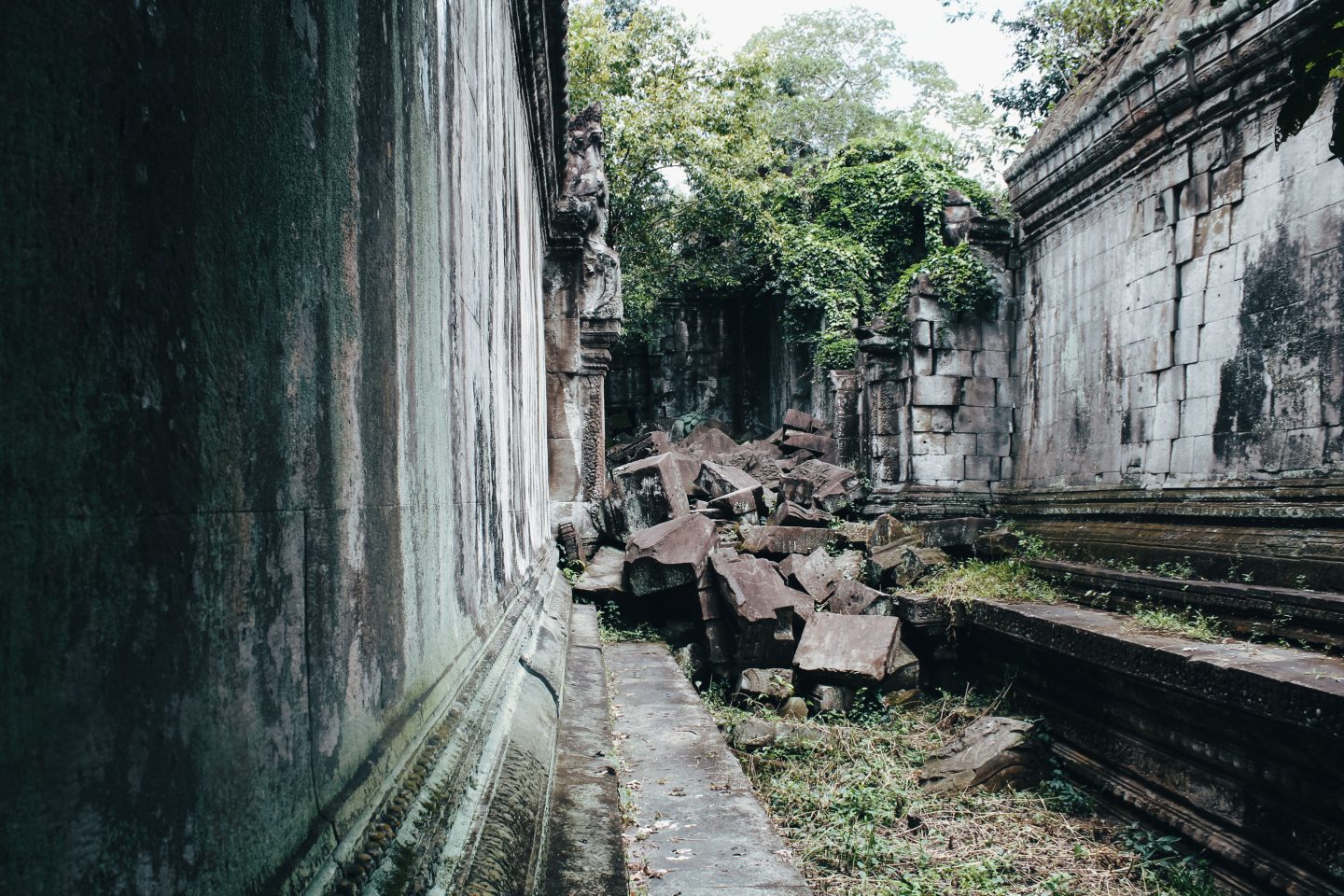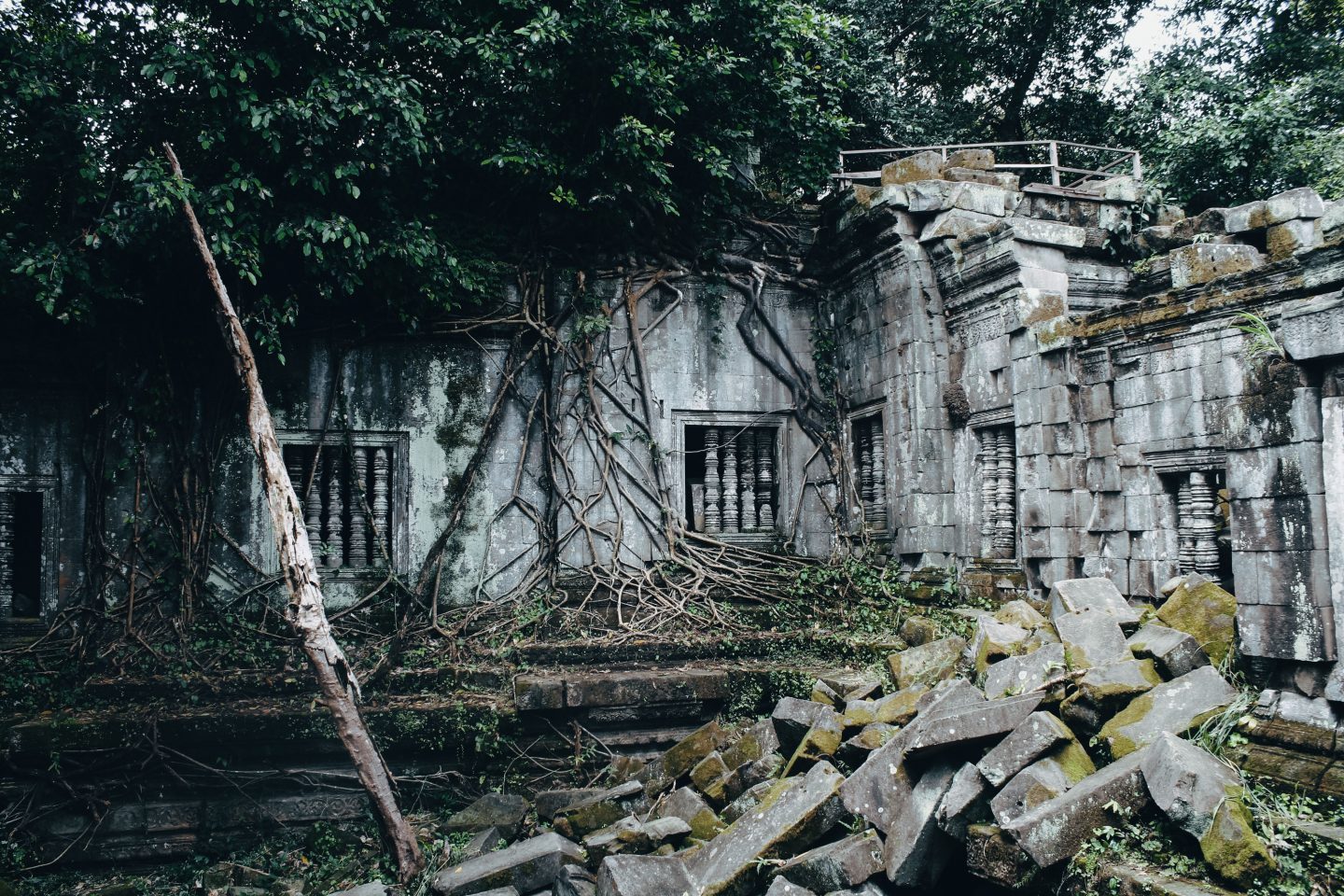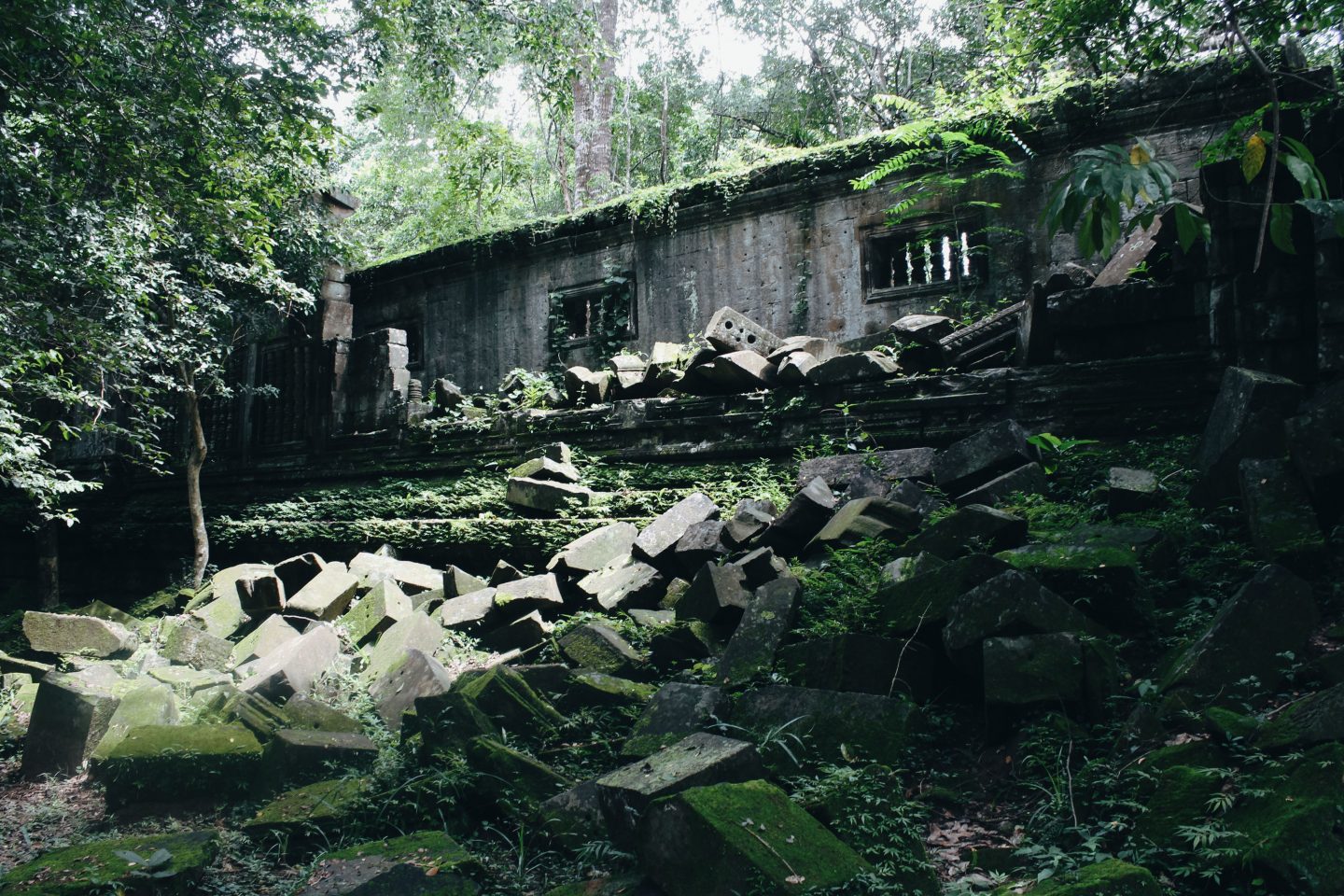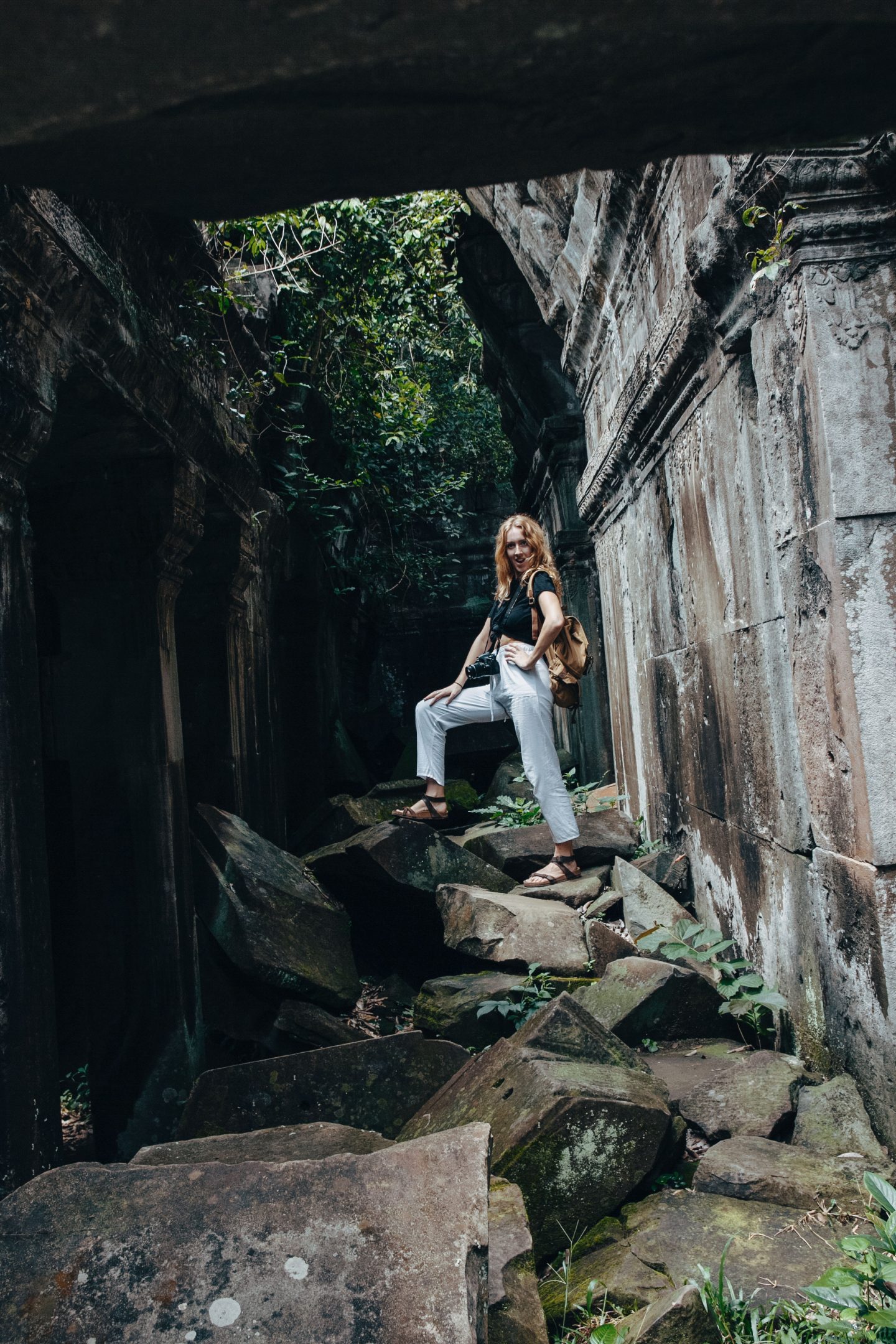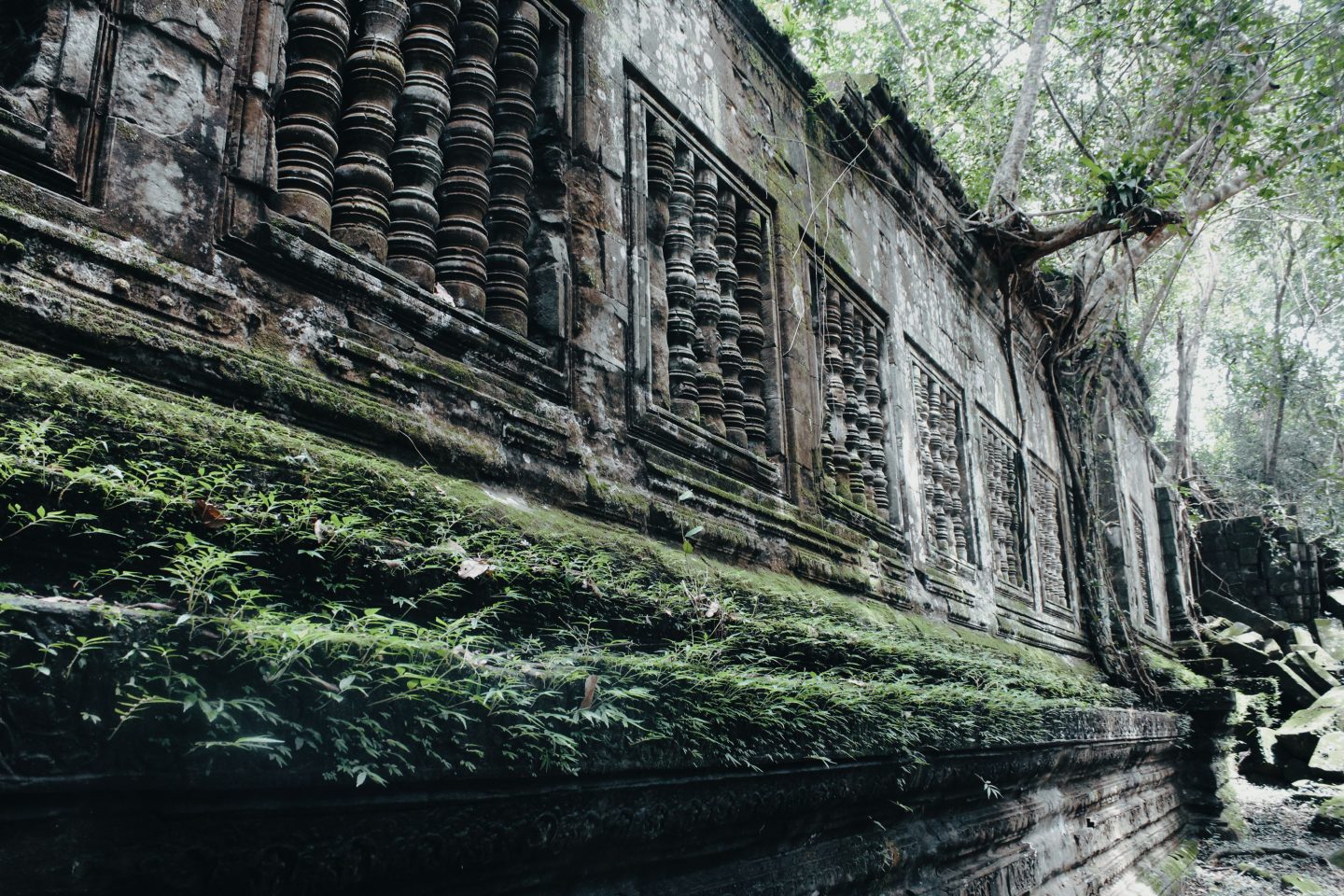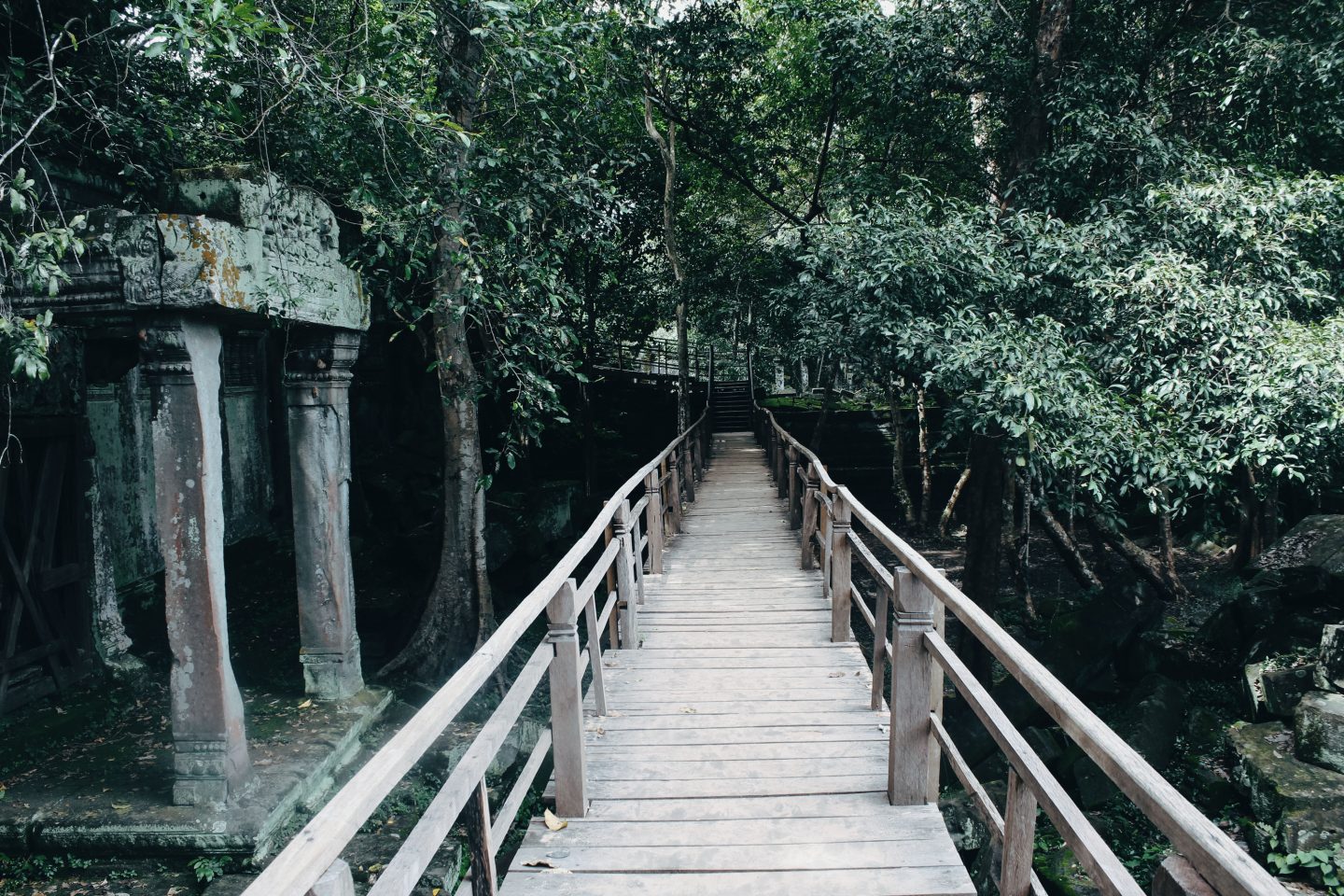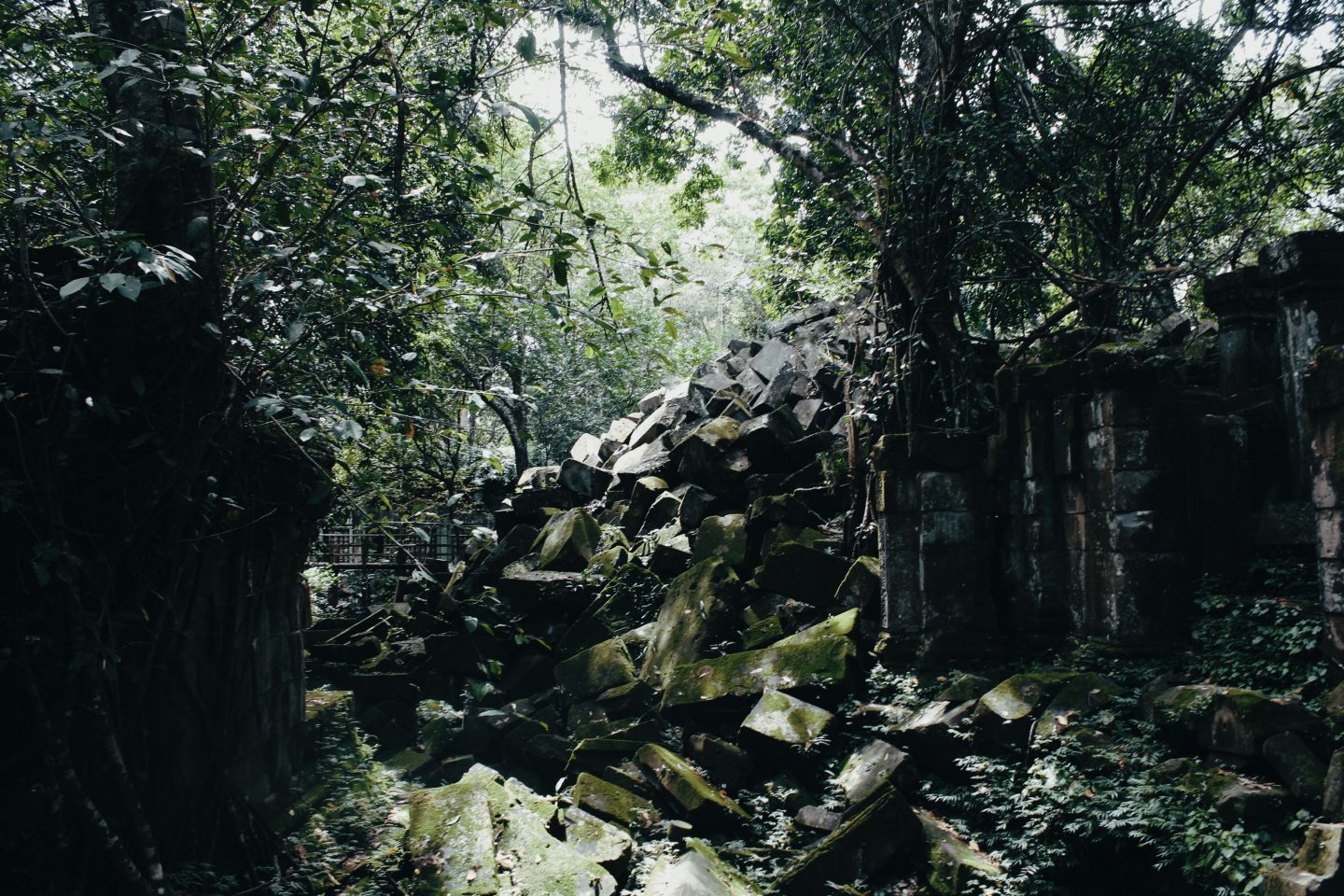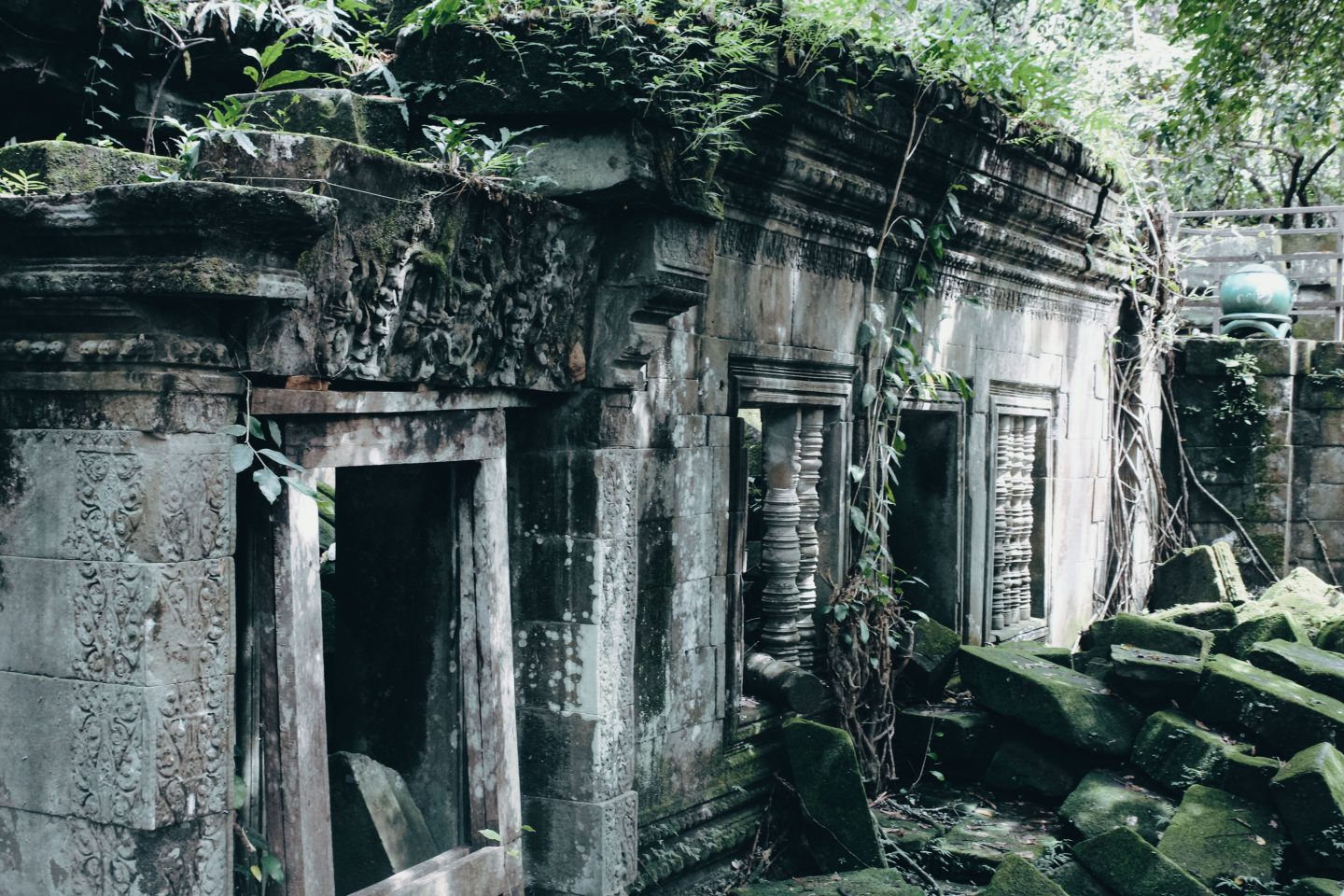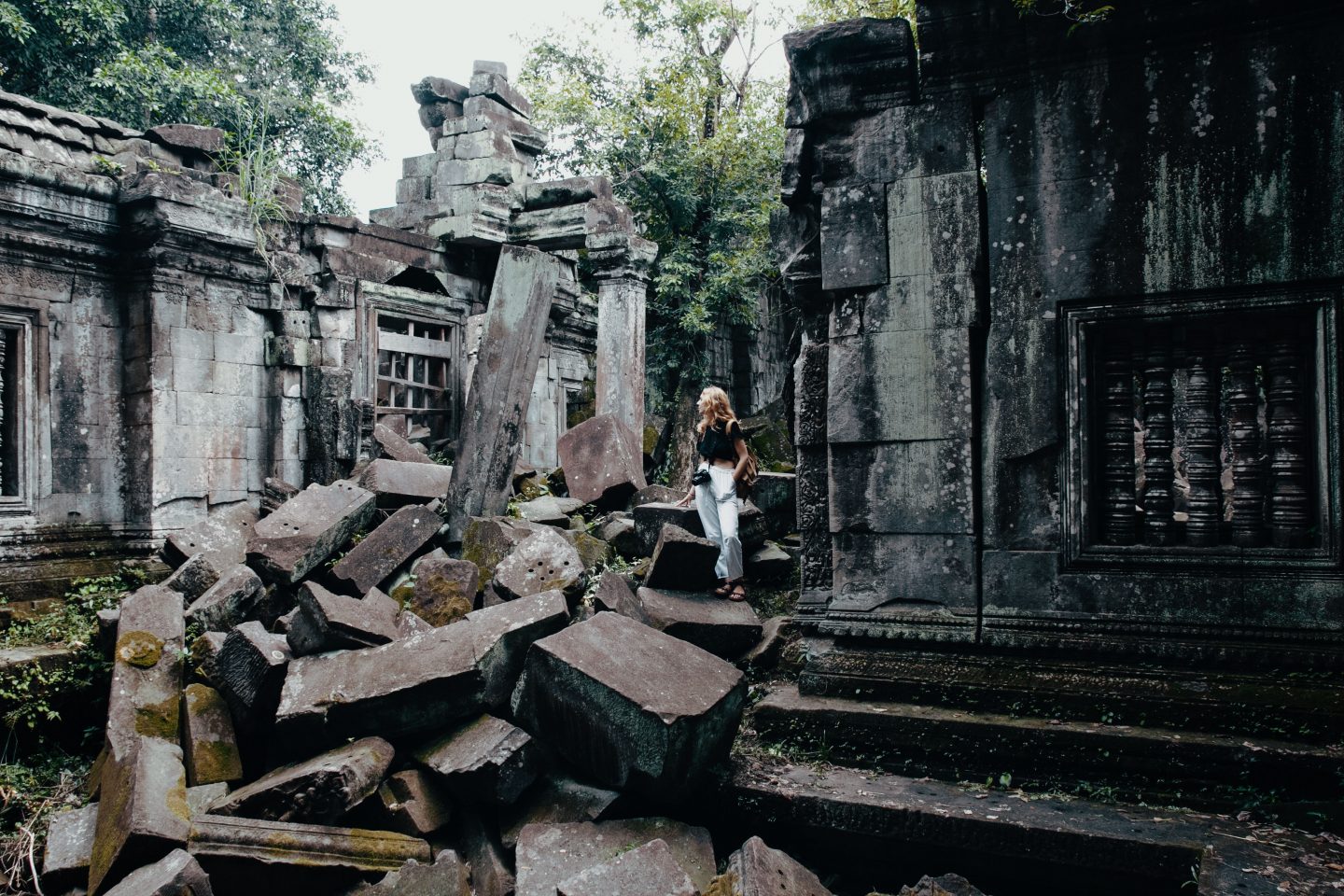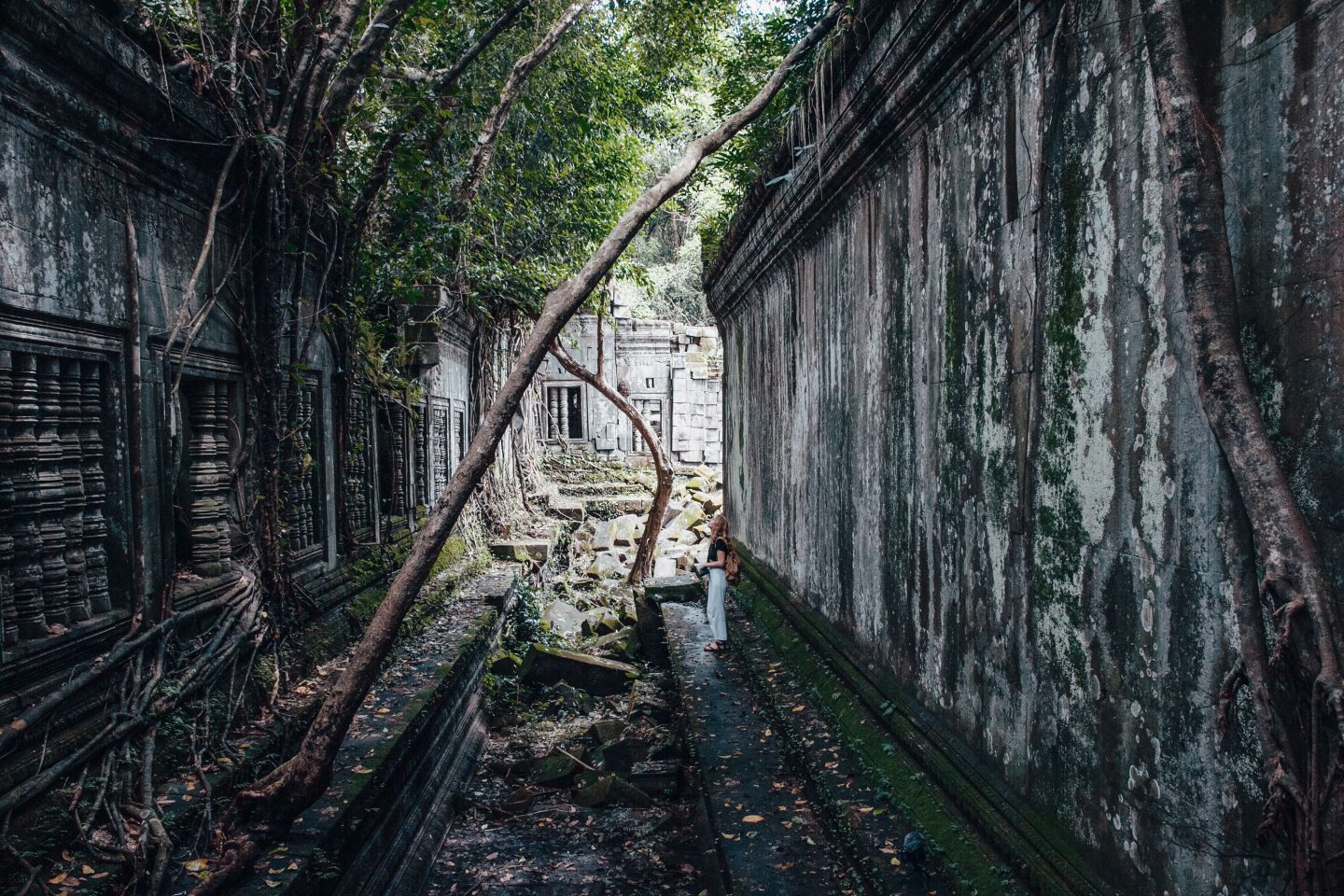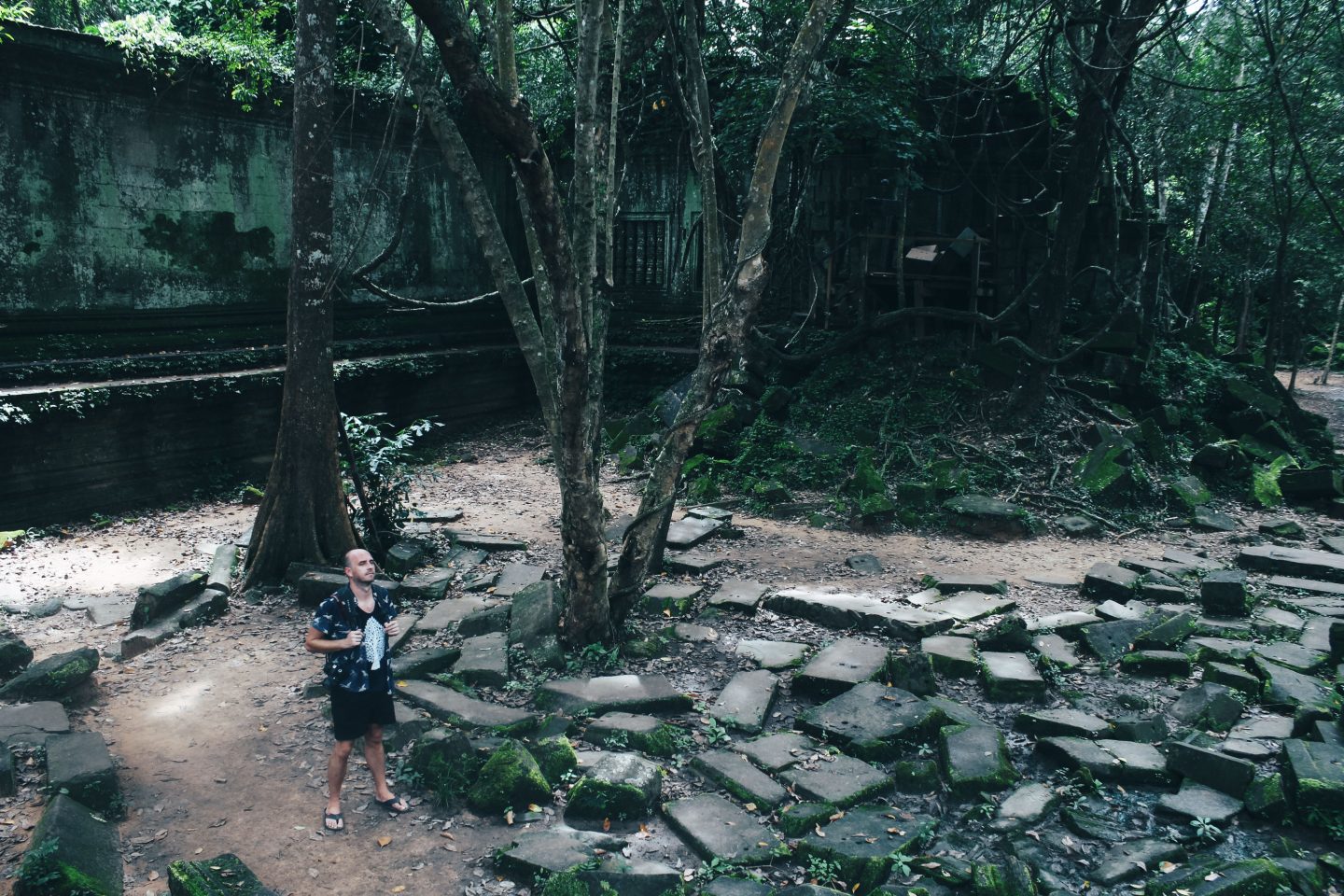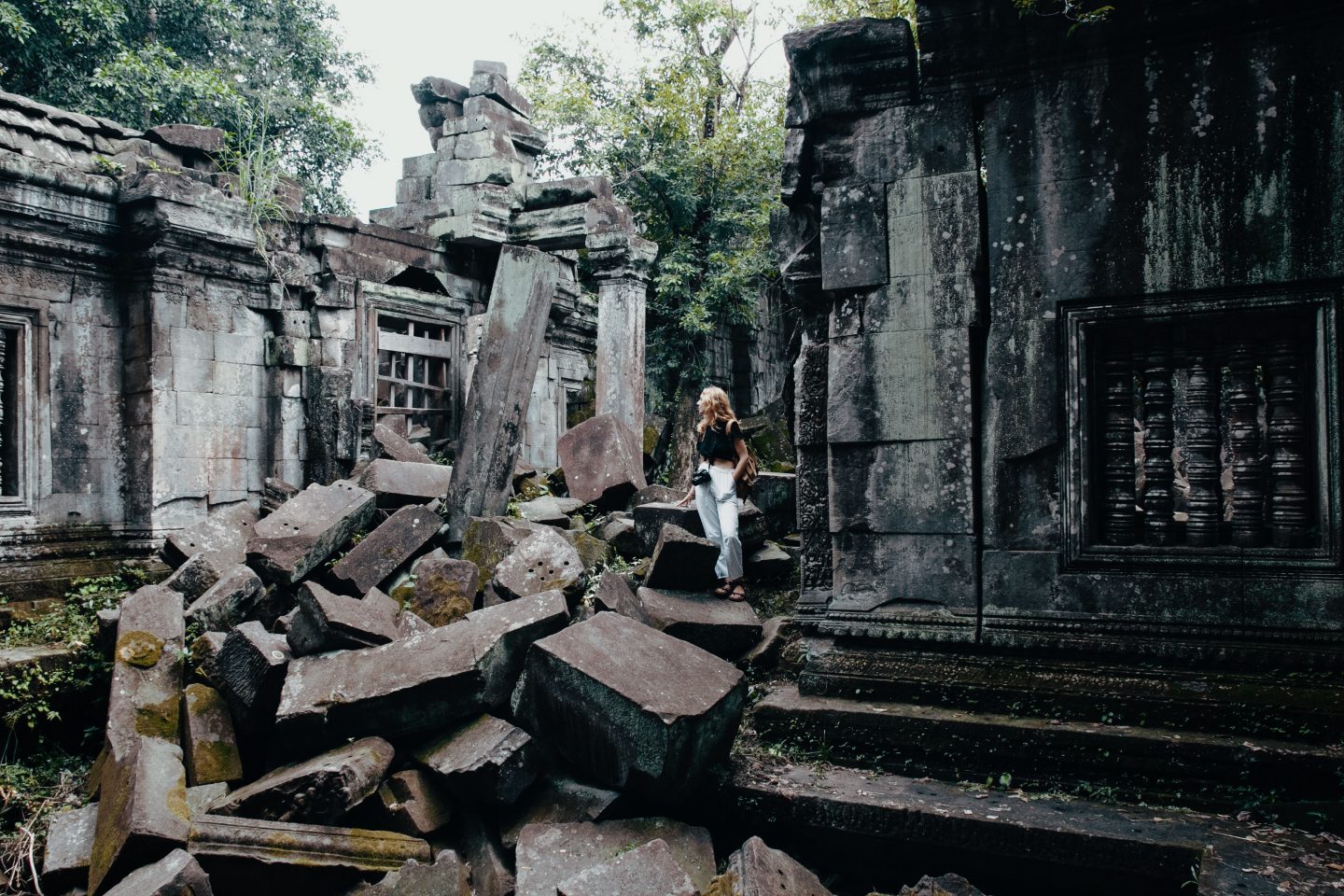
Angkor Wat might hold the crown as the most visited temple in Cambodia, but it is by no means the most magical. The country is littered with enough ruined temples to tire out Indiana Jones, but many are off limits due to landmines and UXO’s. As time goes by, more and more temples are becoming accessible, allowing new discoveries about the impressive Khmer Empire. Two such places are the temples of Beng Mealea and Koh Ker, located a few hours outside of Siem Reap. Both are fascinating and mysterious in their own right, and raise more questions than they answer.
☼ ☼ ☼
Koh Ker was the first place we visited. Surrounded by jungle, it’s a very remote region of Cambodia. Technically an old city, Koh Ker is actually made up of over 180 sanctuaries and temples. Most of these are buried too deep in the jungle and surrounded by landmines to be accessed, but a select few have been uncovered. A seven-stepped pyramid that lies at the centre of the old city is by far the most enigmatic. Rising up over 100ft, the pyramid is unlike anything else in Cambodian architecture. It’s believed to have been built around 900AD, and is thought to have been the state temple for the king. No one really knows why it was built in this unusual style, which only adds to the mystery that surrounds it. In contrast to the crowded Angkor Wat, Koh Ker is peaceful, quiet and free from any crowds. I can’t describe the feeling of walking out of the trees and standing beneath this towering pyramid. It wouldn’t look out of place in an Aztec kingdom. Hiking to the top to see the jungle spreading away from you like a carpet of moss, was certainly an afternoon well spent.
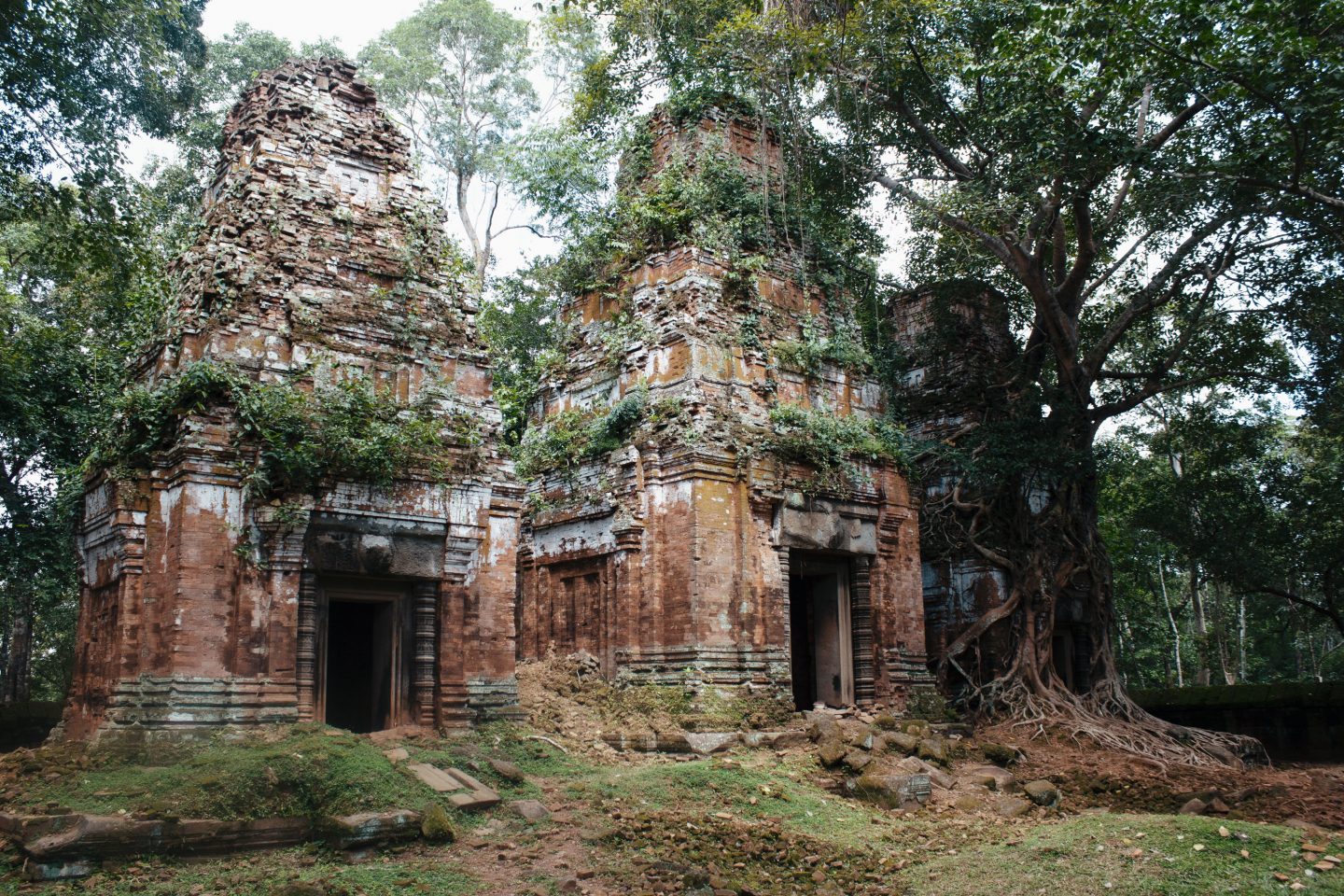
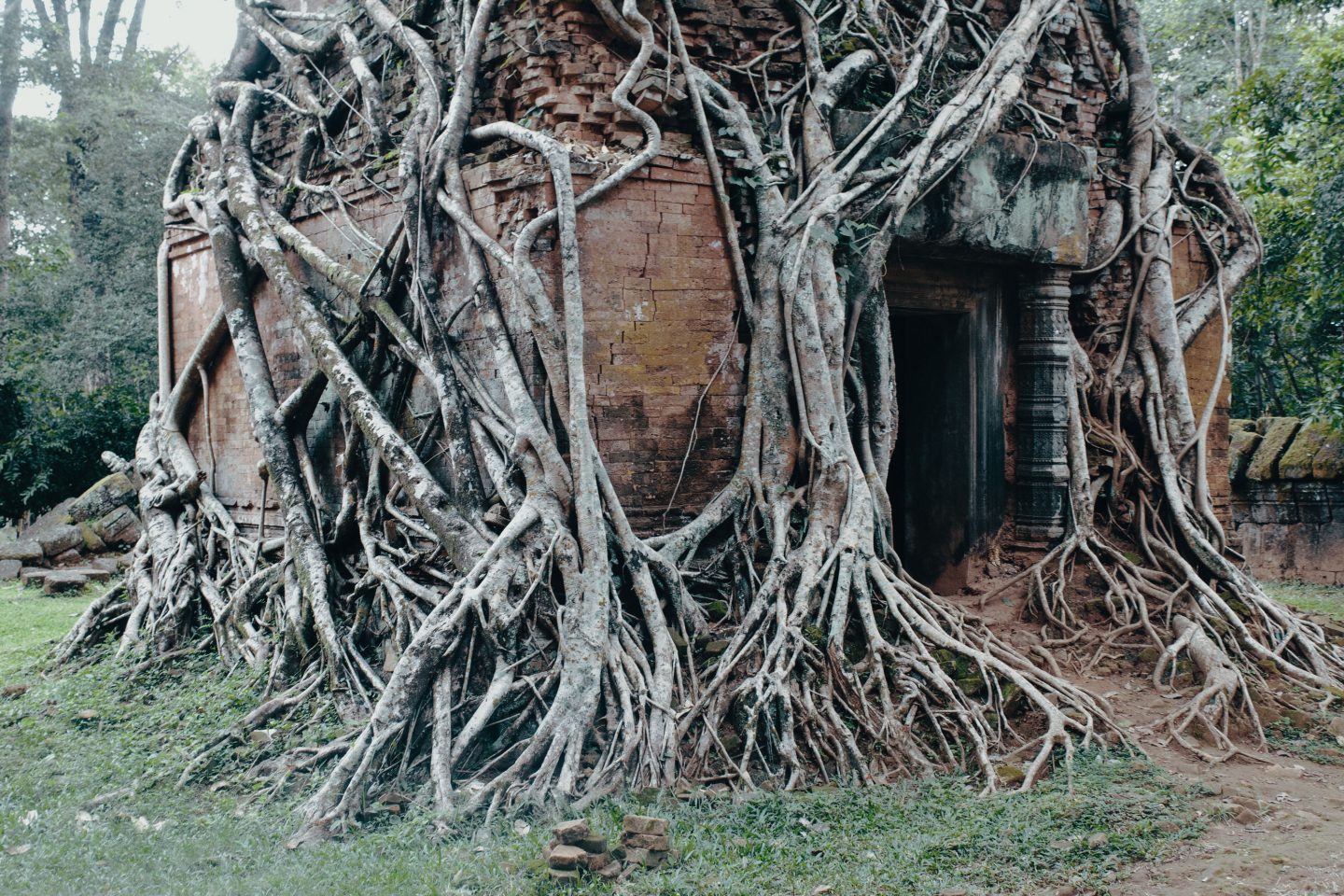
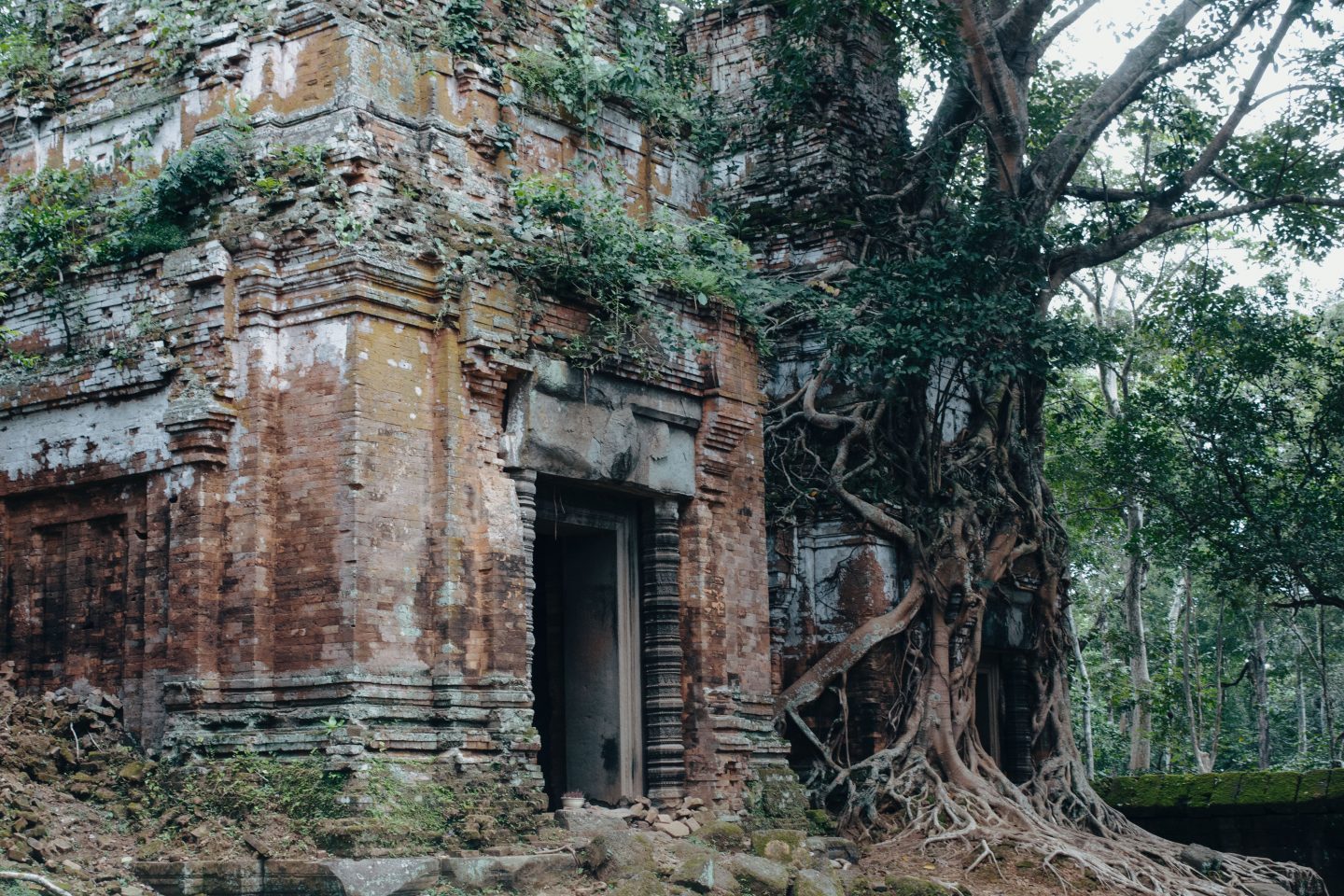
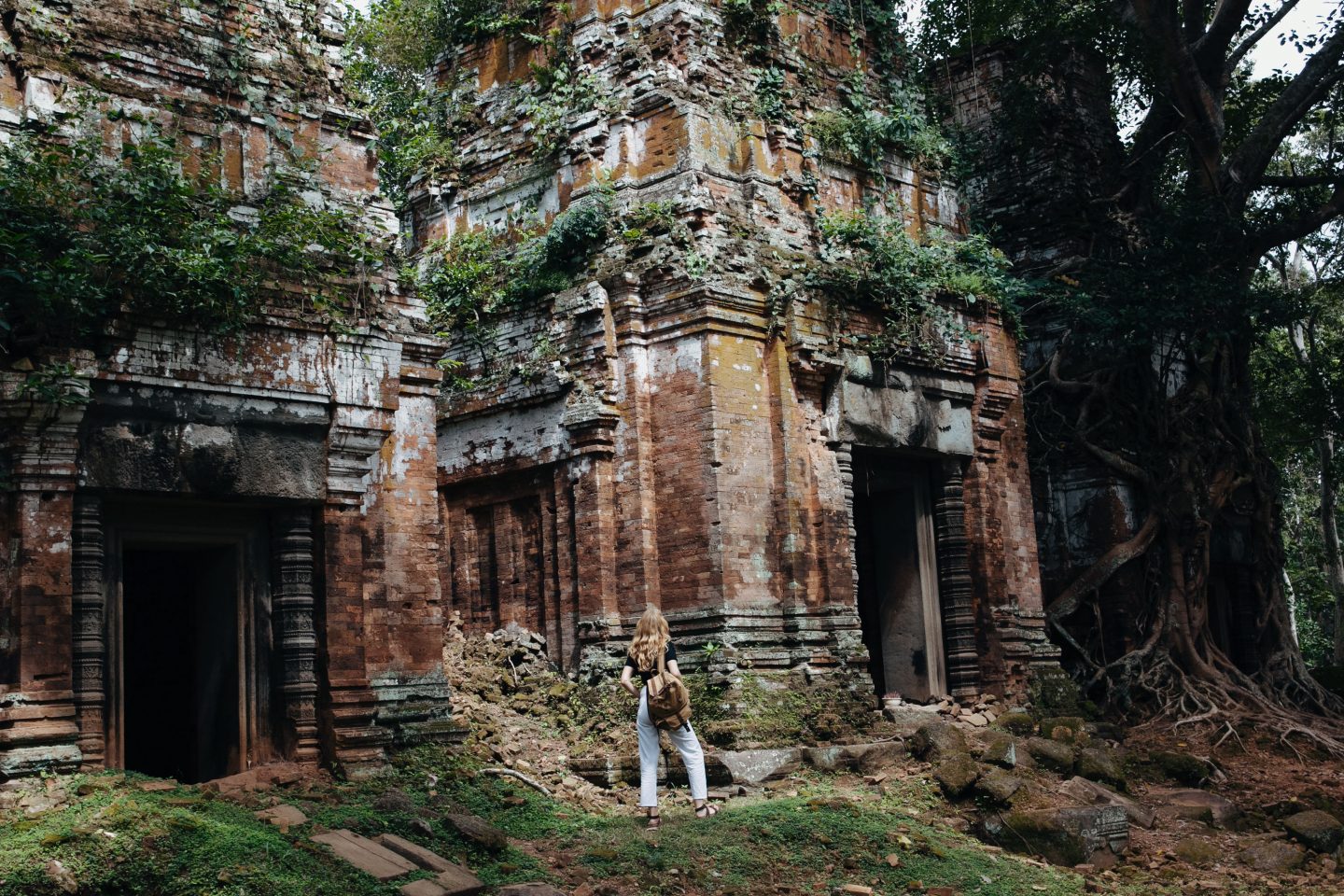
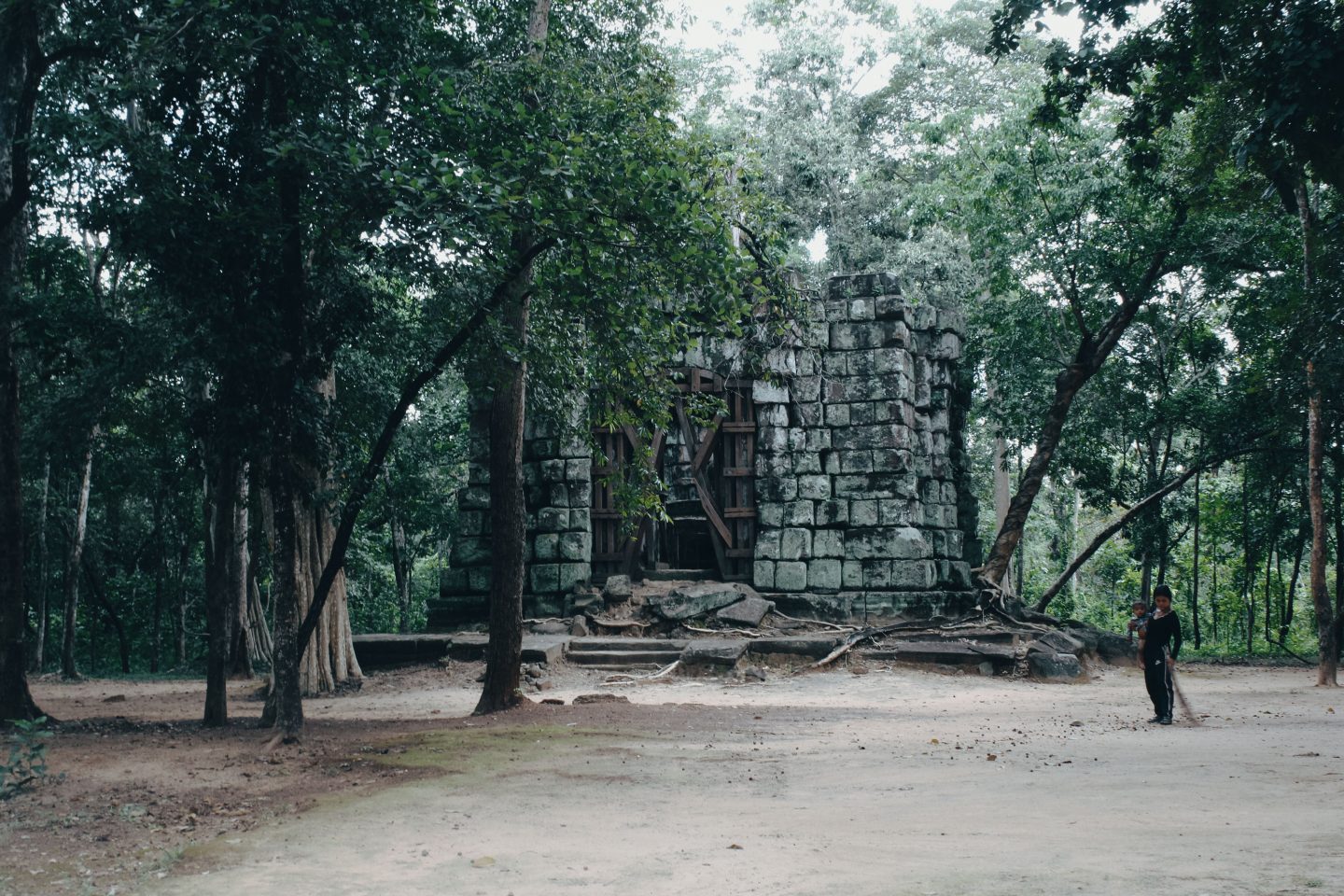
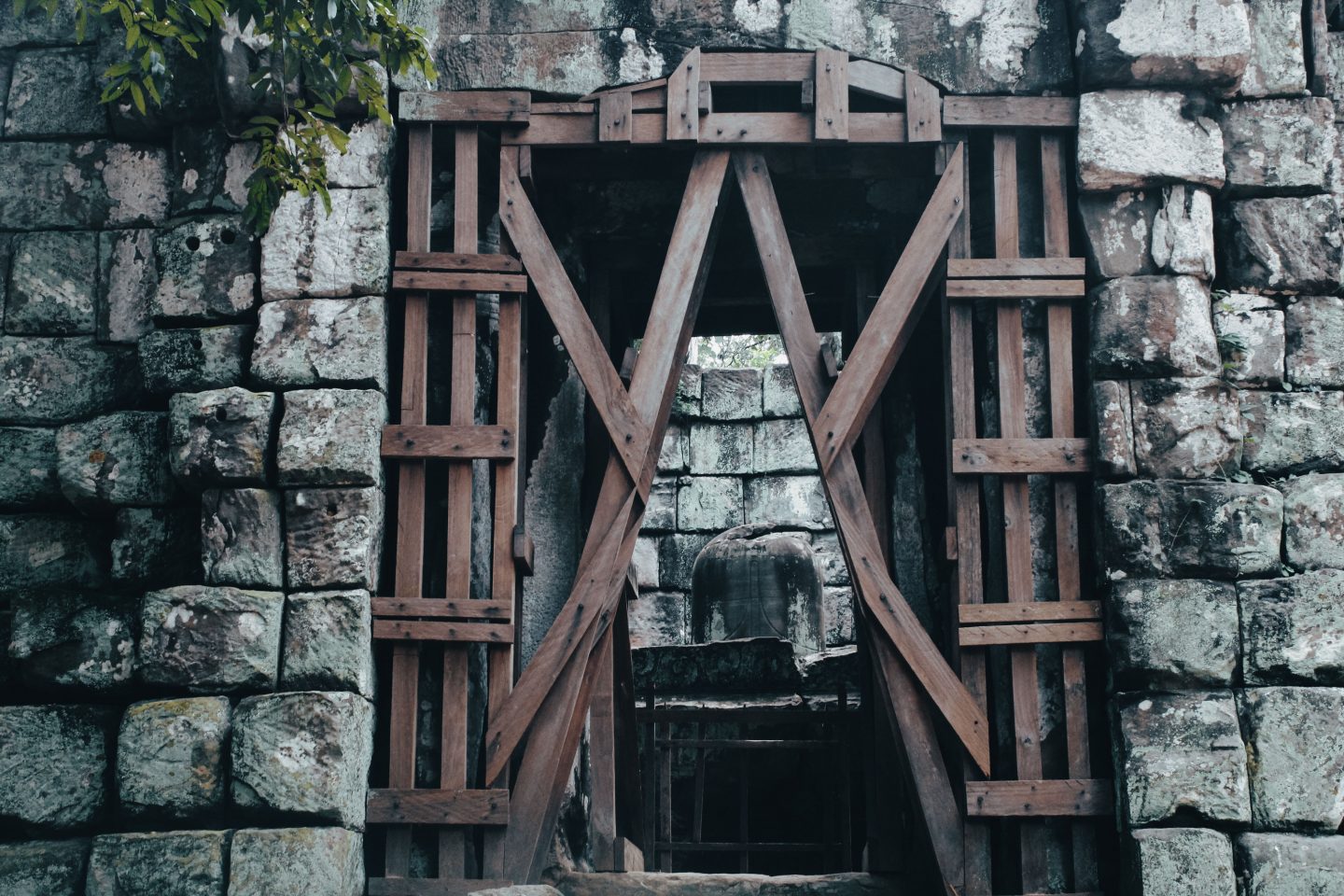
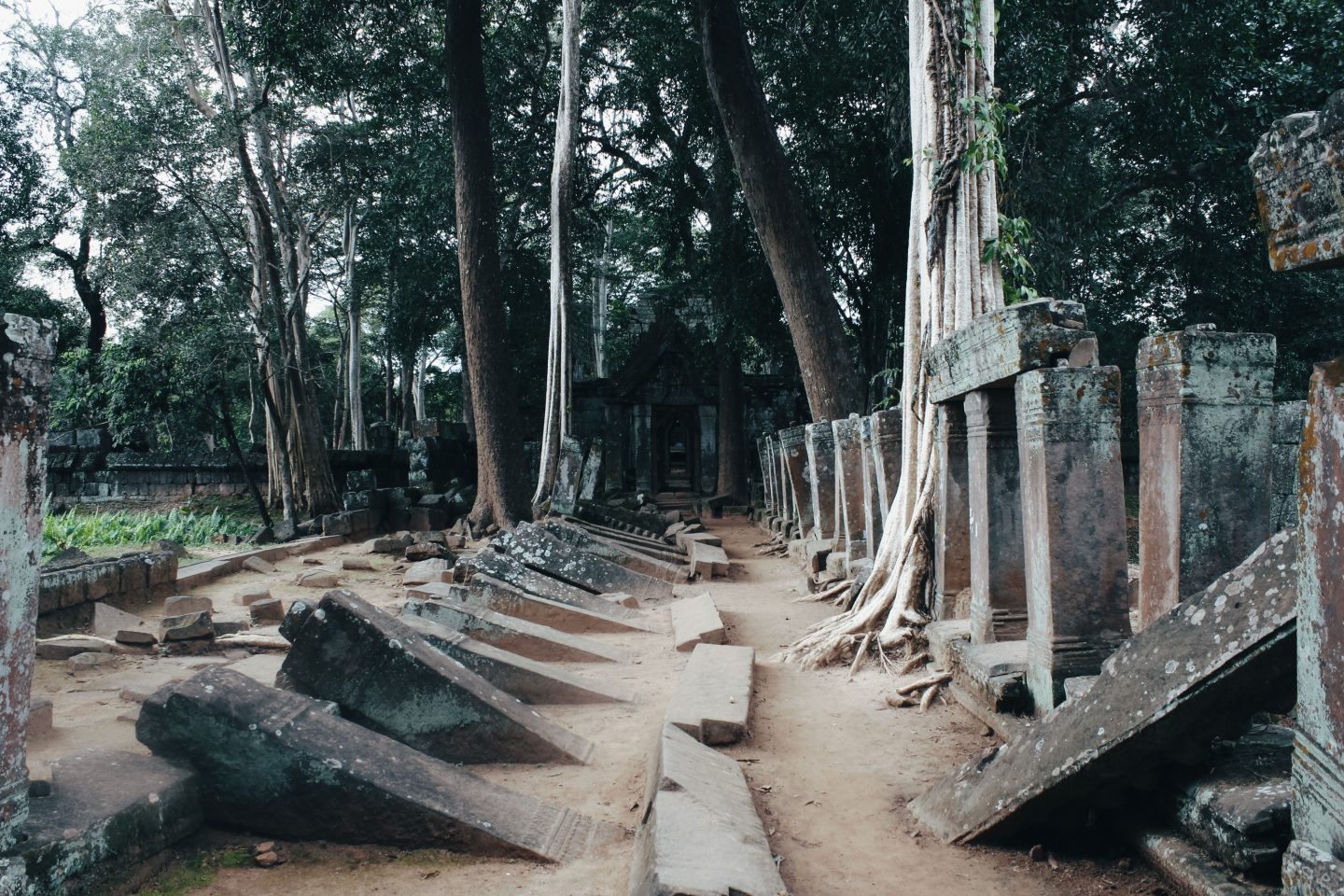
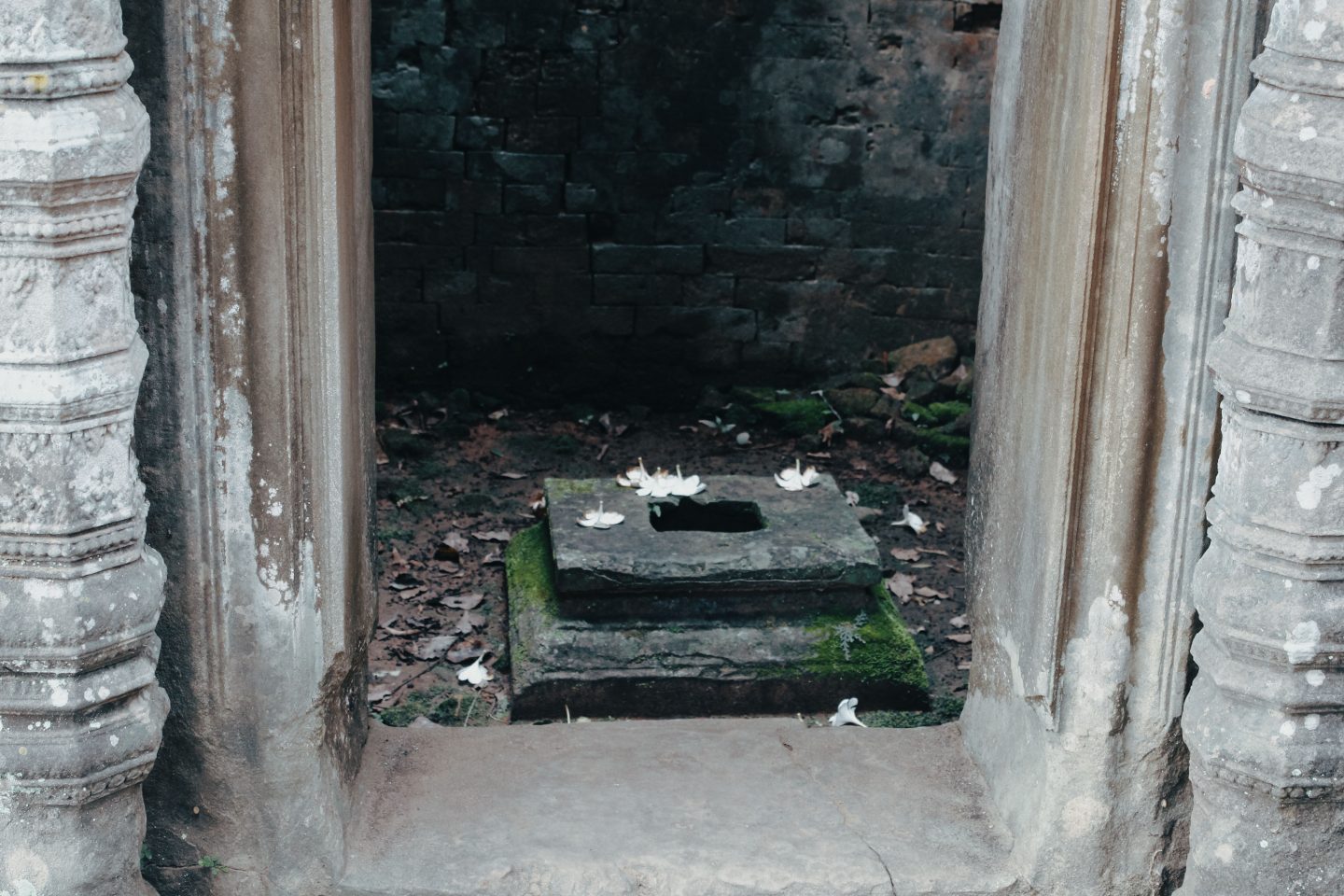
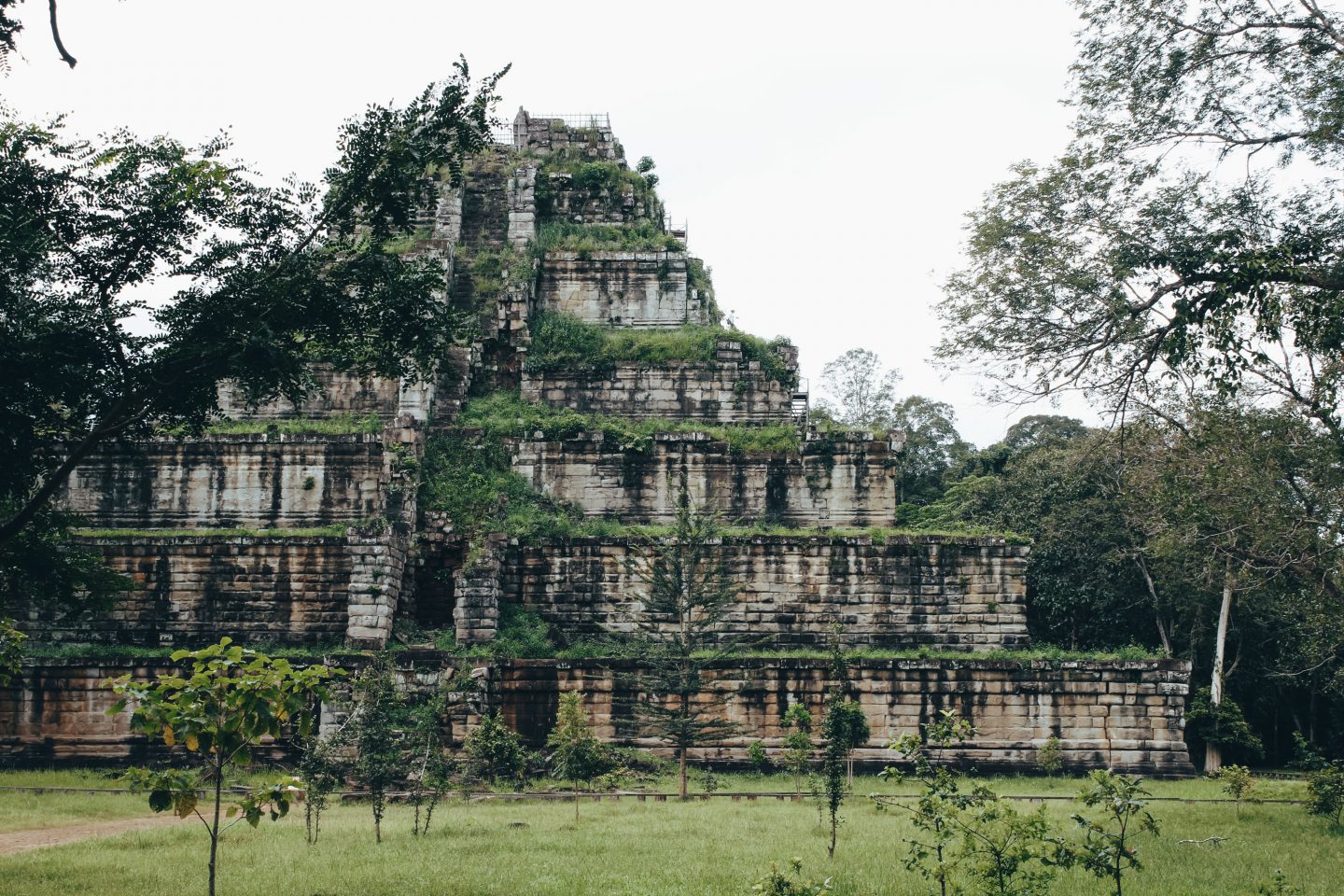
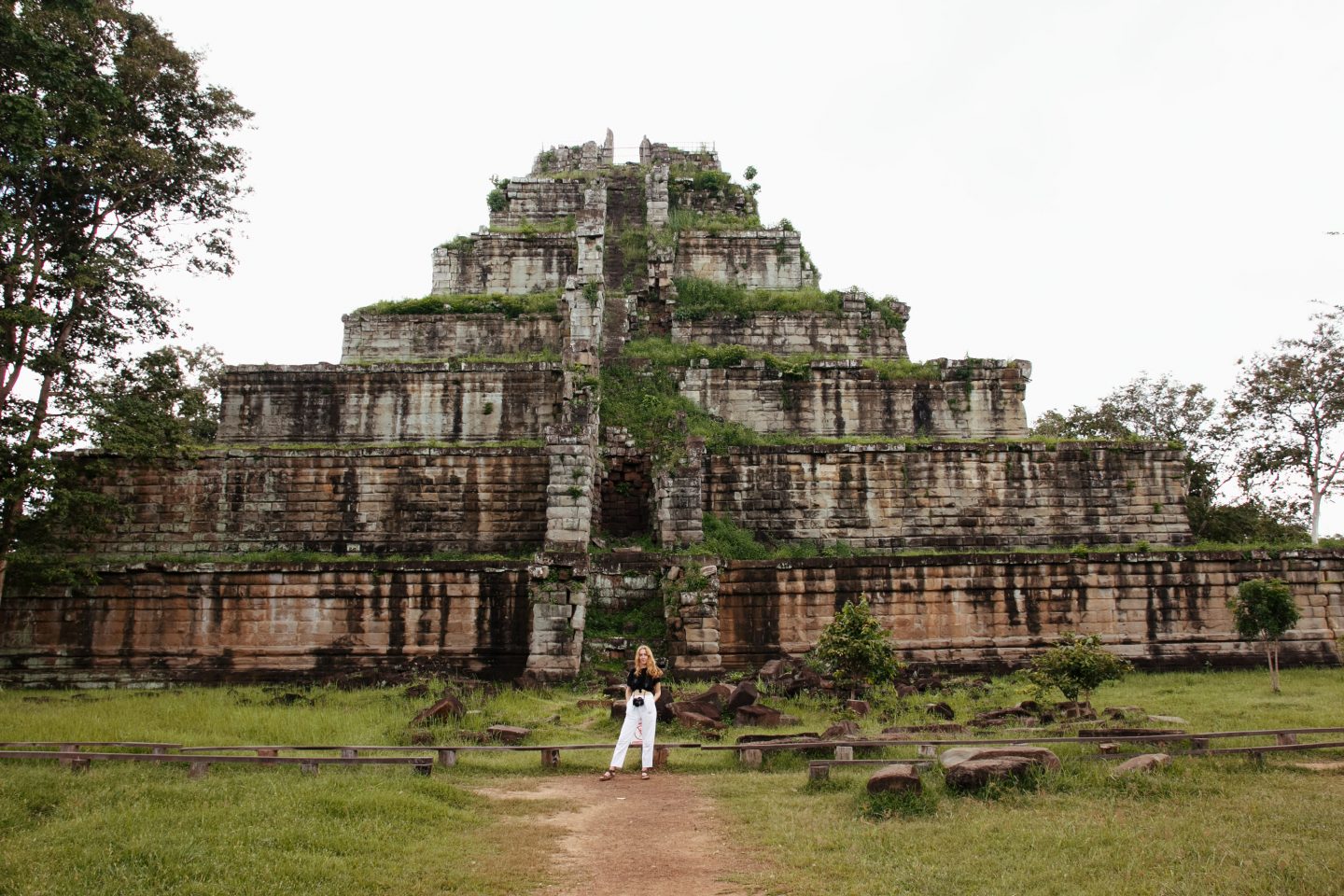
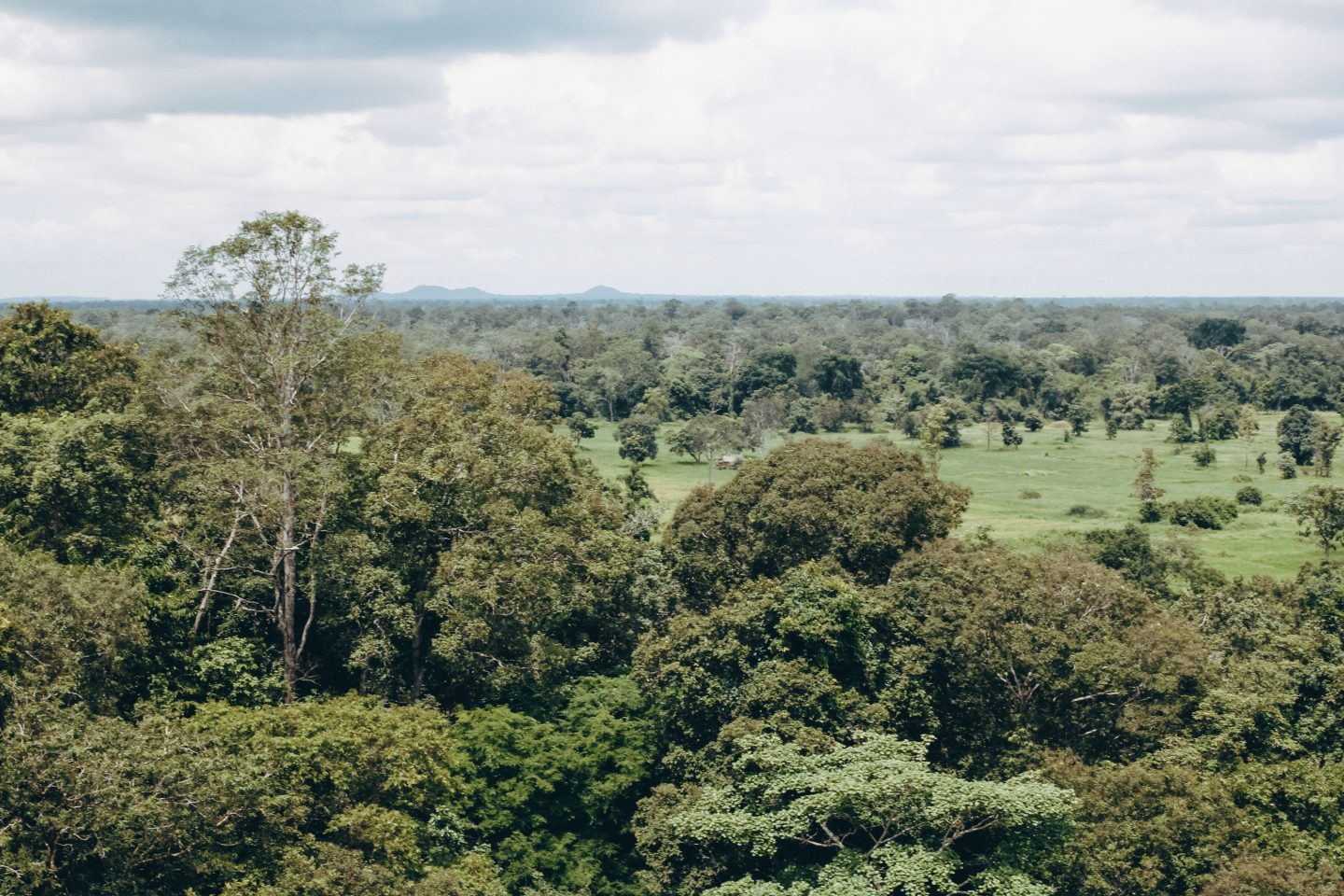
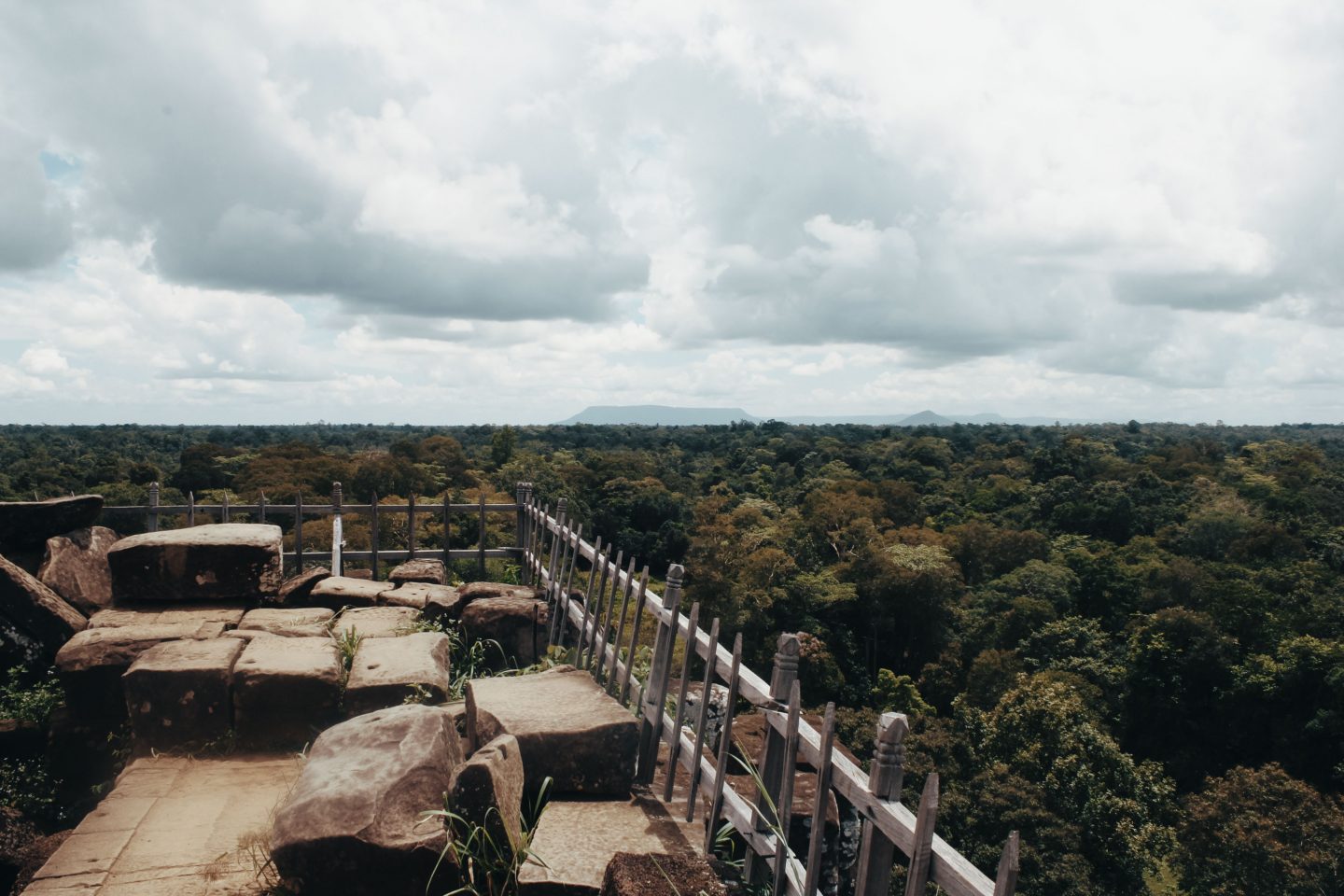
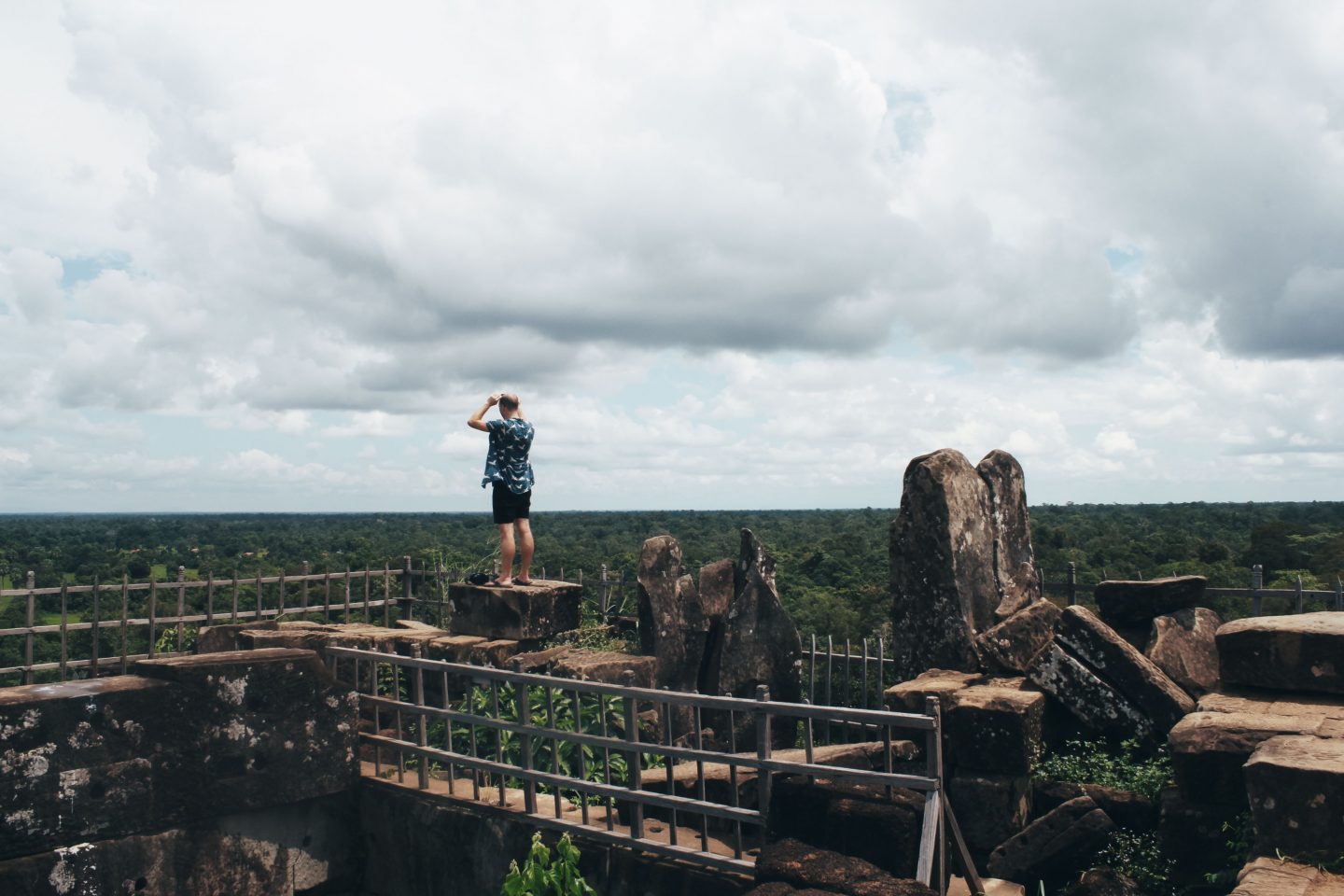
☼
Beng Mealea was the next mystery to be explored. Lying 40km away from Angkor Wat, Beng Mealea is a huge, unrestored and overgrown temple. Its name means lotus pond, and has only recently been accessible to visitors. This is the temple that looks like it’s full of booby traps, hidden statues and a guy with a whip. To wander around here is to be witness to the battle between man and nature. The jungle is winning. Tree roots snake through cracks in the stone and leave meditation galleries and sanctuaries as piles of rubble. What makes it even more fascinating is that no one knows the history of the place. And it’s huge. Archeologists assume it’s of a similar time to Angkor Wat, which would place its construction as the early 12th century. But who worshipped here and who it was built for, are mysteries yet to be uncovered.
